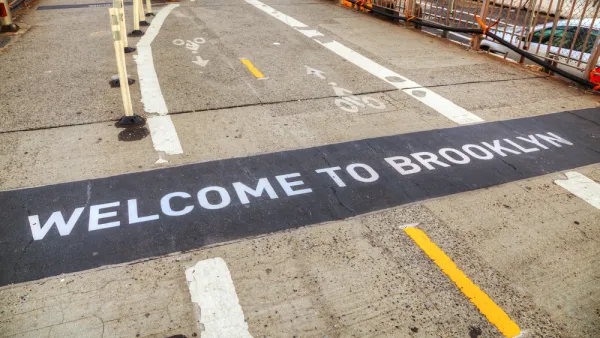Matt Bevilacqua looks at the real story behind headlines making news this week regarding the "fastest-gentrifying neighborhoods in the United States."
This week, The Atlantic Cities and The Washington Post both picked up on a story featured in the blog of the Thomas B. Fordham Institute, a non-profit think tank dedicated to education policy. The post, written by Mike Petrilli, the organization's executive vice president, "culled Census data and made a list of the top 25 ZIP codes in the country that have seen the largest increases in the percentage of white residents between 2000 and 2010" to develop a chart of what he called "the fastest-gentrifying neighborhoods in the United States."
Although the data gathered by Petrilli - "who readily admits that his expertise lies in education, not demographics" - includes some significant information, Bevilacqua rightly points out that the post's core conceit, that "more
white people automatically translates to gentrification," deserves to be challenged.
As Bevilacqua explains, "Undoubtedly, race and class in the U.S. are linked in a
complex and pretty irretrievable way. Nonetheless, they're not one in
the same. Washington, D.C. has seen an influx of middle-class black
residents whose presence has changed the economic landscape of certain
traditionally low-income neighborhoods - or, to put it another way, black gentrifiers. As the New York Times reported several years ago, this has even happend [sic] in Harlem."
"Which
isn't to say that gentrification is wholly about socioeconomic status
to the exclusion of race, either. (For an interesting take on just how
central race is to the topic, check this March 2011 blog post
by Kenyon Farrow.) It's just that any responsible discussion on
something as divisive and widely misunderstood as gentrification
shouldn't fail to take a comprehensive look at the issue."
FULL STORY: Gentrification: Not Only About White People

Analysis: Cybertruck Fatality Rate Far Exceeds That of Ford Pinto
The Tesla Cybertruck was recalled seven times last year.

National Parks Layoffs Will Cause Communities to Lose Billions
Thousands of essential park workers were laid off this week, just before the busy spring break season.

Retro-silient?: America’s First “Eco-burb,” The Woodlands Turns 50
A master-planned community north of Houston offers lessons on green infrastructure and resilient design, but falls short of its founder’s lofty affordability and walkability goals.

Test News Post 1
This is a summary

Analysis: Cybertruck Fatality Rate Far Exceeds That of Ford Pinto
The Tesla Cybertruck was recalled seven times last year.

Test News Headline 46
Test for the image on the front page.
Urban Design for Planners 1: Software Tools
This six-course series explores essential urban design concepts using open source software and equips planners with the tools they need to participate fully in the urban design process.
Planning for Universal Design
Learn the tools for implementing Universal Design in planning regulations.
EMC Planning Group, Inc.
Planetizen
Planetizen
Mpact (formerly Rail~Volution)
Great Falls Development Authority, Inc.
HUDs Office of Policy Development and Research
NYU Wagner Graduate School of Public Service



























